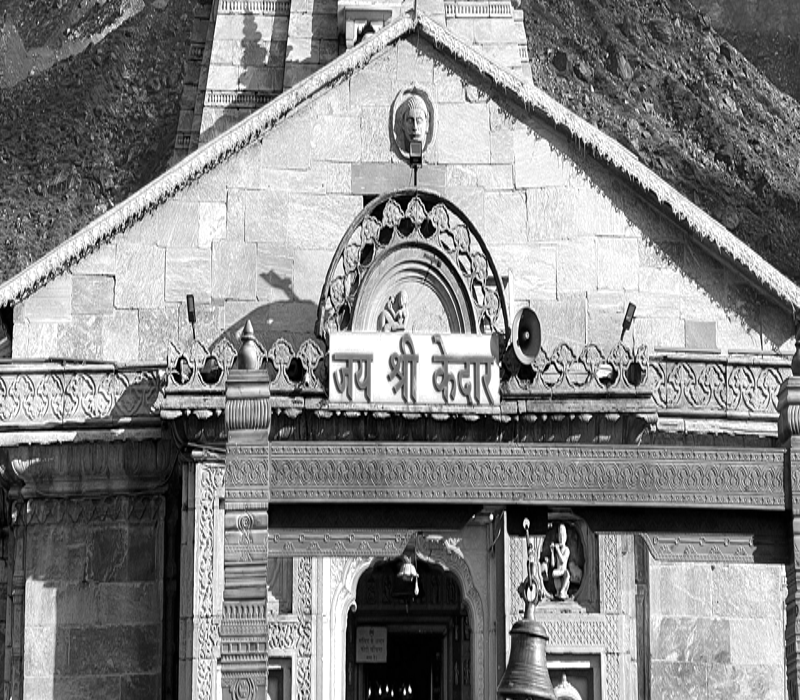- Offices: Dehradun | Dwarka New Delhi
Mana, a picturesque and historically significant village situated in the Chamoli district of Uttarakhand, India, is renowned as the last inhabited village on the Indo-Tibetan border. Nestled in the breathtaking Himalayas, this remote village is steeped in ancient legends, cultural heritage, and natural wonders. Mana offers a unique blend of traditional charm and spiritual significance, making it an enchanting destination for travelers seeking an authentic and offbeat experience.
In this article, we embark on a journey to explore the allure of Mana, its geographical significance, the cultural and historical heritage, the spiritual connection, the nearby attractions, and the accessibility of this hidden gem of the Himalayas.
Geographical Significance:
Mana is situated at an altitude of approximately 3,200 meters (10,500 feet) above sea level, making it one of the highest inhabited places in India. Its location near the Indo-Tibetan border gives it strategic and geographical importance.
The village lies on the banks of the river Saraswati, believed to be the mythical river mentioned in ancient Hindu scriptures. According to local legends, the river once flowed visibly through the village, but over time, it has become subterranean, symbolizing the transition from the Satya Yuga to the Kali Yuga, according to Hindu cosmology.
Mana's proximity to the Mana Pass, a high-altitude pass, further enhances its significance as a trade route between India and Tibet. However, access to the pass is restricted for civilians due to security reasons.
The village also serves as the base for trekkers heading to the sacred pilgrimage site of Vasudhara Falls and the revered Badrinath Temple, both of which are in close proximity to Mana.
Cultural and Historical Heritage:
Mana boasts a rich cultural heritage and a deep-rooted history dating back centuries. The village's architecture, traditional houses, and lifestyle reflect the influence of Tibetan culture.
The villagers predominantly belong to the Bhotia community, known for their warm hospitality and vibrant cultural practices. Bhotia people are traditionally traders, and Mana's location on the ancient trade route facilitated the exchange of goods between India and Tibet.
The village has several ancient temples and monasteries that hold religious and cultural significance. The Vyas Gufa, also known as the Vyas Cave, is believed to be the residence of the sage Ved Vyasa, who is credited with composing the Mahabharata and several other Hindu scriptures. The cave is a place of pilgrimage and attracts spiritual seekers and devotees.
Another notable attraction in Mana is the Bhim Pul, a natural rock bridge formed over the Saraswati River. According to Hindu mythology, the Pandava prince Bhima created the bridge to allow his wife, Draupadi, to cross the river during their exile.
The Spiritual Connection:
Mana is deeply connected to Hindu mythology and is considered a sacred place. The village is believed to be the home of the divine Yaksha, named Vyasa Guha Yaksha, who is associated with the river Saraswati.
According to legend, the sage Vyasa, after composing the Mahabharata, meditated in the Vyas Gufa, making the cave an important pilgrimage site for Hindus.
The village also holds significance for Buddhists, as it is believed to be one of the 108 places visited by Guru Padmasambhava, the founder of Tibetan Buddhism.
The nearby Badrinath Temple, one of the four prominent Char Dham pilgrimage sites, attracts thousands of devotees every year, and Mana serves as a crucial base for pilgrims undertaking the holy journey.
The spiritual ambiance of Mana, with its serene surroundings and ancient temples, invites visitors to embrace the tranquility and divinity of the Himalayan region.
Nearby Attractions:
Mana is surrounded by several attractions that enhance the overall experience of visiting the village.
Vasudhara Falls: A popular trek from Mana leads to the stunning Vasudhara Falls, a 122-meter (400-foot) cascading waterfall. The trek offers breathtaking views of the valley and is believed to be the site where the Pandava queen Draupadi ascended to heaven.
Badrinath Temple: Situated approximately 3 kilometers from Mana, the Badrinath Temple is one of the holiest Hindu temples dedicated to Lord Vishnu. The temple's architecture, along with its spiritual significance, makes it a must-visit destination for pilgrims and tourists alike.
Satopanth Lake: A challenging trek from Mana takes visitors to the pristine Satopanth Lake, situated at an altitude of 4,600 meters (15,092 feet). The emerald green lake, surrounded by snow-capped peaks, is considered sacred by Hindus and is believed to be the abode of the Trimurti - Brahma, Vishnu, and Shiva.
Accessibility and Accommodation:
Mana is accessible by road from Joshimath, which is well connected to major cities in Uttarakhand. Visitors can reach Joshimath by road from Rishikesh, Haridwar, and Dehradun.
Accommodation options in Mana are limited due to its remote location. Visitors can find basic guesthouses and homestays that provide comfortable yet modest accommodations. It is advisable to book accommodations in advance, especially during the peak tourist season.
The best time to visit Mana is from May to October, when the weather is pleasant and the village is accessible. The winter months are harsh, with heavy snowfall and sub-zero temperatures, making the region inhospitable and challenging to reach.
Conclusion:
Mana, the last village of India, stands as a testament to the region's cultural heritage, spiritual significance, and geographical importance. Its enchanting charms, steeped in ancient legends and surrounded by natural wonders, make it a hidden gem of the Himalayas. From the mythological stories to the breathtaking landscapes, Mana offers an authentic and offbeat experience for travelers seeking to connect with the essence of the Himalayan region. A visit to Mana allows one to immerse themselves in the serenity and splendor of the Himalayas, leaving an indelible mark on the heart and soul of every visitor.

